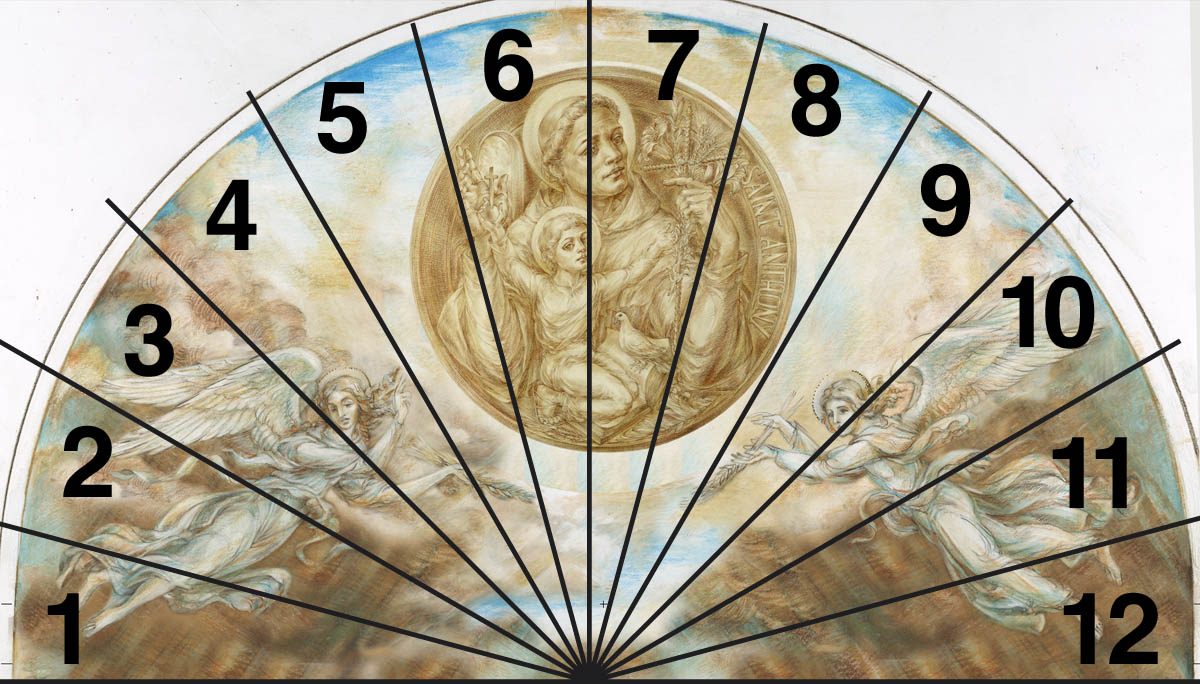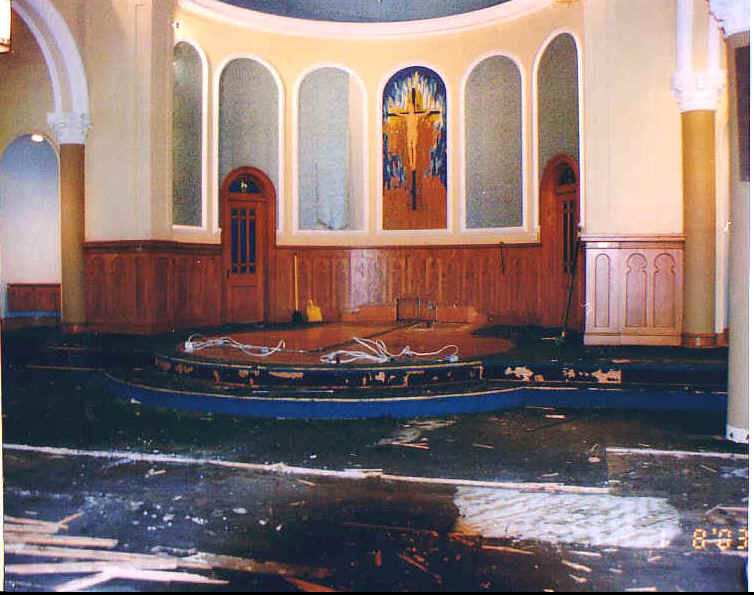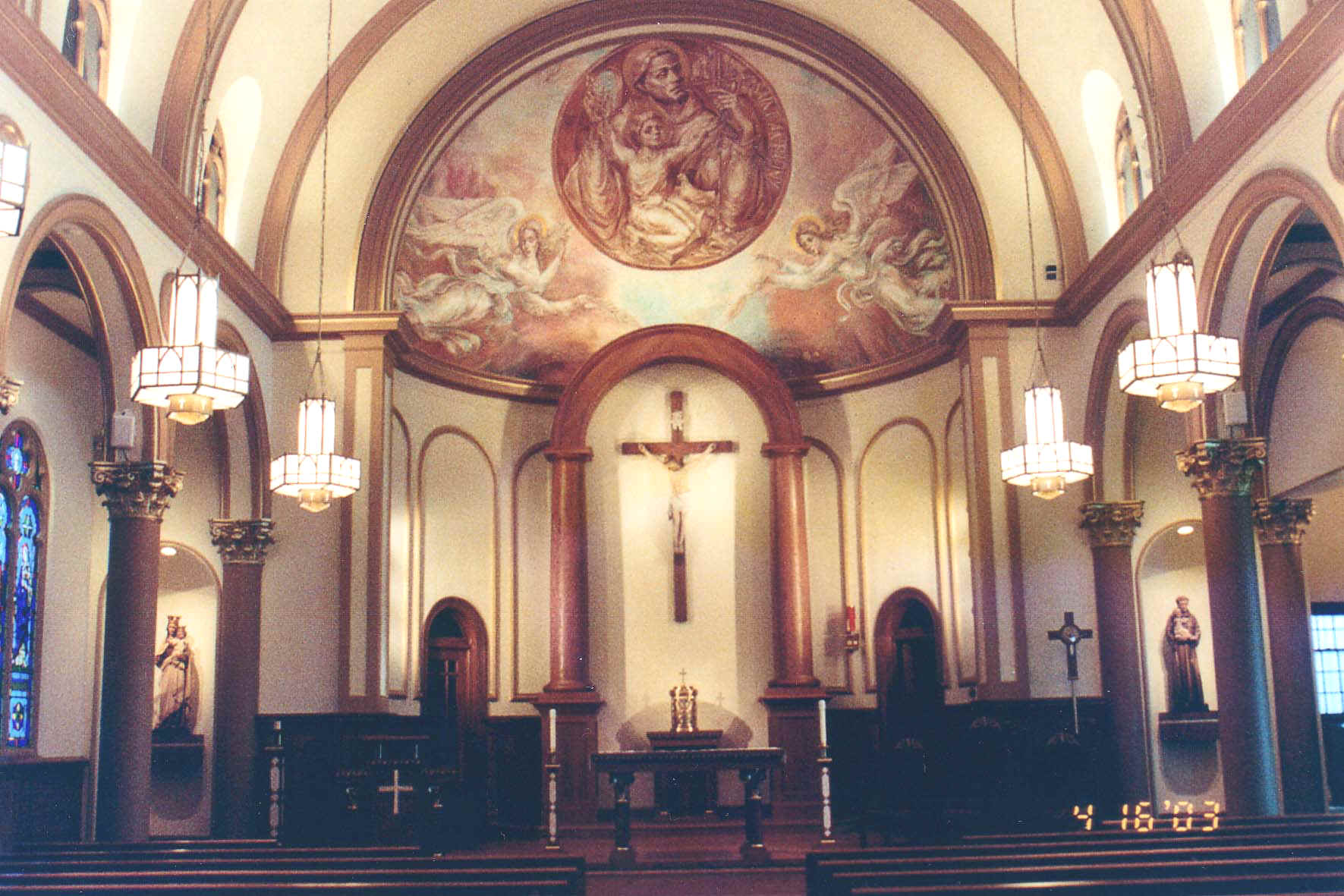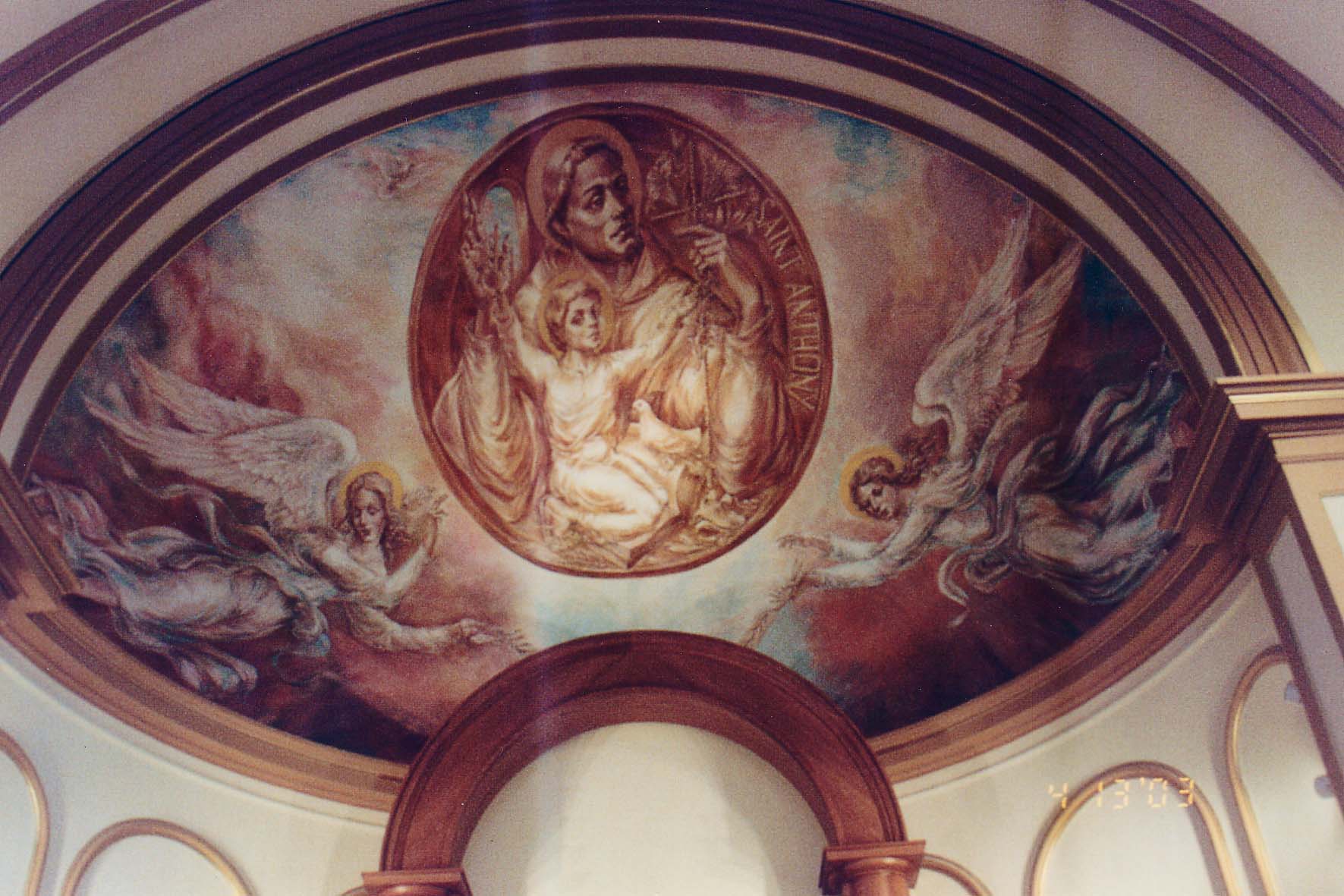2D Pattern Example
St. Anthony's Cathedral Renovation
Watertown, NY
For this job, we had to create a 3D surface model of half of a dome in a cathedral. Actually, it was slightly elliptical in shape, so we had to recreate a shape based on specific measurements.
They were renovating the entire church and they hired an artist to paint the dome with a picture of St. Anthony. However, the artist wanted to paint a small size picture, scan it into a computer, plot out the 2D patterns, and attach them to the dome. This is where we and General Typographers (Washington, DC) came into the picture.
Our job was to recreate the exact 3D surface shape of the dome and use that shape to create 2D wedge-shaped patterns. General Typographers would take the 2D pattern shapes and project the artist's painting onto the strips. These patterns would be plotted full-size on artist canvas using pigment-based inks.
The first difficulty was to make sure we had the correct geometry of the dome. Then, it was a simple job to generate the full 3D half-dome shape using NURB surfaces in Pilot3D.
The second difficulty was to balance the trade-off between fewer (larger) patterns and developed 2D pattern accuracy. Since the dome is a curved shape with compound (double) curvature, there is no perfectly accurate 2D pattern. There would have to be some stretch in the material. Smaller wedge-shaped patterns would be more accurate, but would require more time and create more alignment problems. We ended up dividing the artwork into 12, approximately 15 degree wedge-shaped pieces, as shown below.


This is the 2D pattern for wedge number 12. Notice the alignment grid drawn on the pattern with an extra grid line drawn on the "bottom" side of the pattern. This is one of the 2D patterns onto which General Typographers projected the image above.
The project was a success requiring only a few, small touch-ups and everyone met a very tight schedule.

Before Renovation

After Renovation

Final Result